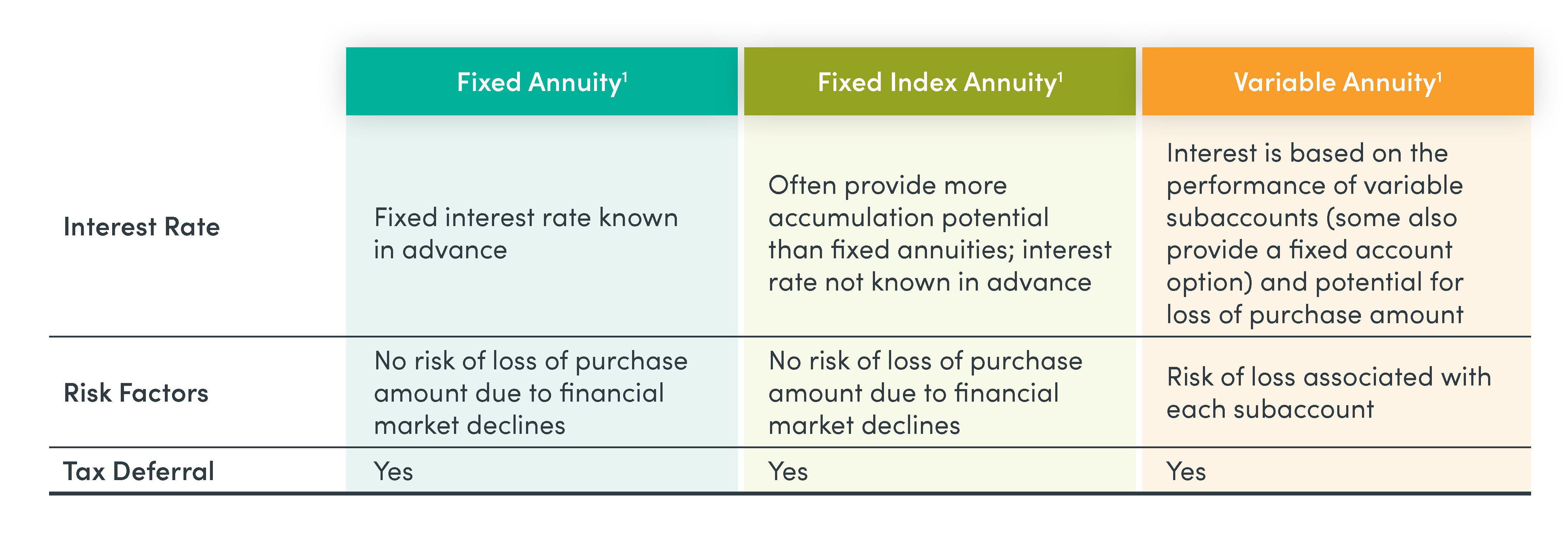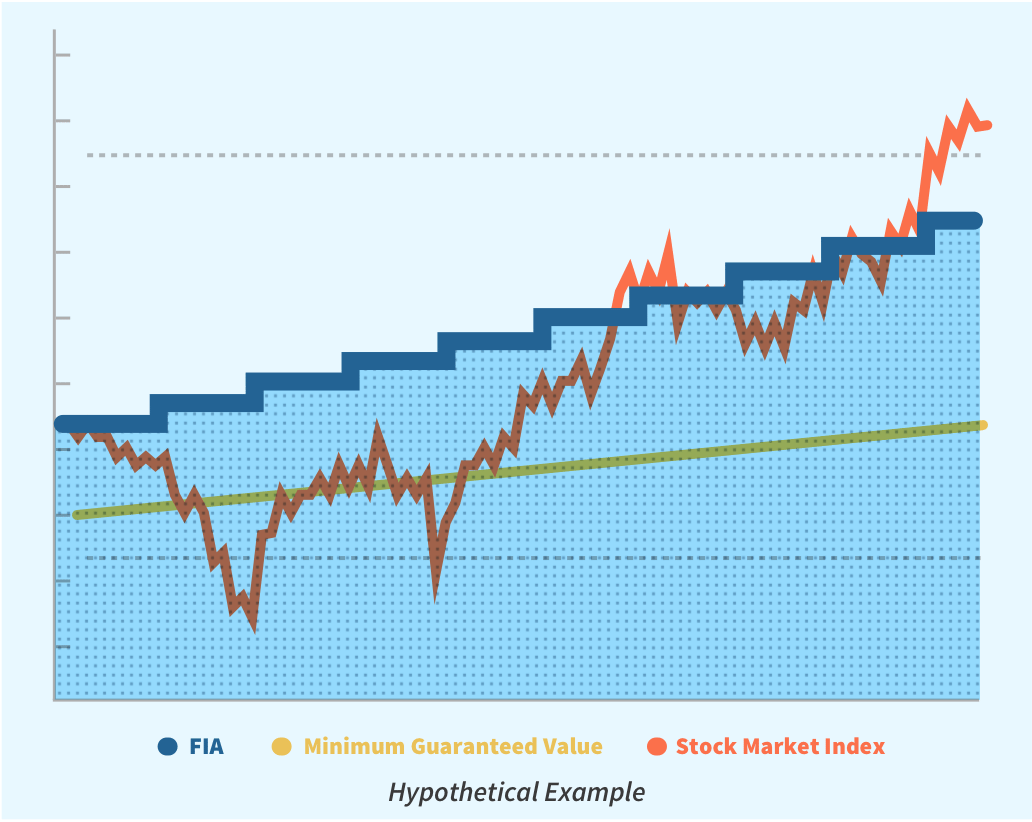All Categories
Featured
Table of Contents
Just as with a dealt with annuity, the owner of a variable annuity pays an insurance coverage firm a swelling sum or series of repayments in exchange for the pledge of a collection of future settlements in return. However as stated above, while a fixed annuity grows at an ensured, constant rate, a variable annuity expands at a variable rate that relies on the efficiency of the underlying investments, called sub-accounts.

Throughout the build-up stage, properties purchased variable annuity sub-accounts grow on a tax-deferred basis and are taxed just when the agreement proprietor takes out those profits from the account. After the build-up stage comes the income phase. In time, variable annuity properties should theoretically increase in worth up until the contract owner decides she or he would love to start taking out cash from the account.
The most significant concern that variable annuities typically existing is high expense. Variable annuities have numerous layers of fees and costs that can, in accumulation, develop a drag of up to 3-4% of the contract's value each year.
Decoding How Investment Plans Work Key Insights on Fixed Annuity Or Variable Annuity Defining Annuity Fixed Vs Variable Features of Fixed Vs Variable Annuity Pros And Cons Why Variable Vs Fixed Annuities Is a Smart Choice Fixed Annuity Or Variable Annuity: How It Works Key Differences Between Different Financial Strategies Understanding the Rewards of Fixed Index Annuity Vs Variable Annuities Who Should Consider Fixed Annuity Vs Equity-linked Variable Annuity? Tips for Choosing Pros And Cons Of Fixed Annuity And Variable Annuity FAQs About Planning Your Financial Future Common Mistakes to Avoid When Planning Your Retirement Financial Planning Simplified: Understanding Fixed Index Annuity Vs Variable Annuity A Beginner’s Guide to Smart Investment Decisions A Closer Look at How to Build a Retirement Plan
M&E cost costs are computed as a portion of the agreement worth Annuity issuers hand down recordkeeping and other management expenses to the agreement proprietor. This can be in the form of a level yearly cost or a percentage of the agreement value. Management costs may be included as part of the M&E risk cost or may be examined independently.
These fees can range from 0.1% for passive funds to 1.5% or even more for proactively managed funds. Annuity agreements can be personalized in a number of ways to offer the certain needs of the contract owner. Some usual variable annuity cyclists consist of ensured minimal buildup benefit (GMAB), assured minimum withdrawal advantage (GMWB), and assured minimum income advantage (GMIB).

Variable annuity payments offer no such tax obligation deduction. Variable annuities often tend to be very inefficient lorries for passing wide range to the future generation since they do not take pleasure in a cost-basis change when the original agreement owner passes away. When the proprietor of a taxed financial investment account passes away, the price bases of the investments kept in the account are adapted to show the marketplace prices of those financial investments at the time of the proprietor's death.
Understanding Financial Strategies Key Insights on Your Financial Future What Is Annuities Fixed Vs Variable? Benefits of Choosing the Right Financial Plan Why Fixed Income Annuity Vs Variable Growth Annuity Can Impact Your Future How to Compare Different Investment Plans: A Complete Overview Key Differences Between Variable Vs Fixed Annuity Understanding the Rewards of Long-Term Investments Who Should Consider Deferred Annuity Vs Variable Annuity? Tips for Choosing the Best Investment Strategy FAQs About Fixed Vs Variable Annuities Common Mistakes to Avoid When Choosing Fixed Income Annuity Vs Variable Annuity Financial Planning Simplified: Understanding Variable Vs Fixed Annuities A Beginner’s Guide to Fixed Annuity Vs Variable Annuity A Closer Look at How to Build a Retirement Plan
For that reason, beneficiaries can acquire a taxable investment portfolio with a "fresh start" from a tax obligation viewpoint. Such is not the situation with variable annuities. Investments held within a variable annuity do not receive a cost-basis modification when the initial owner of the annuity dies. This indicates that any accumulated latent gains will certainly be handed down to the annuity owner's beneficiaries, together with the associated tax obligation burden.
One considerable problem related to variable annuities is the potential for conflicts of rate of interest that may feed on the component of annuity salesmen. Unlike an economic expert, who has a fiduciary task to make financial investment decisions that profit the client, an insurance coverage broker has no such fiduciary obligation. Annuity sales are highly financially rewarding for the insurance coverage specialists that sell them because of high ahead of time sales compensations.

Several variable annuity agreements contain language which puts a cap on the portion of gain that can be experienced by specific sub-accounts. These caps avoid the annuity owner from completely taking part in a portion of gains that might otherwise be appreciated in years in which markets generate considerable returns. From an outsider's perspective, it would appear that capitalists are trading a cap on investment returns for the abovementioned guaranteed flooring on financial investment returns.
As kept in mind above, surrender charges can badly restrict an annuity proprietor's capability to relocate assets out of an annuity in the very early years of the agreement. Even more, while most variable annuities allow contract proprietors to withdraw a defined quantity during the build-up phase, withdrawals yet amount usually lead to a company-imposed fee.
Withdrawals made from a fixed passion price investment alternative might also experience a "market worth modification" or MVA. An MVA readjusts the worth of the withdrawal to show any kind of changes in rate of interest from the moment that the cash was invested in the fixed-rate choice to the time that it was taken out.

On a regular basis, also the salespeople who offer them do not totally understand how they work, therefore salespeople occasionally exploit a buyer's feelings to offer variable annuities rather than the advantages and suitability of the items themselves. We believe that investors need to totally understand what they possess and just how much they are paying to own it.
Decoding Variable Annuities Vs Fixed Annuities A Comprehensive Guide to Investment Choices What Is Indexed Annuity Vs Fixed Annuity? Features of Variable Annuity Vs Fixed Indexed Annuity Why Choosing the Right Financial Strategy Is Worth Considering How to Compare Different Investment Plans: How It Works Key Differences Between Fixed Income Annuity Vs Variable Growth Annuity Understanding the Key Features of Long-Term Investments Who Should Consider Strategic Financial Planning? Tips for Choosing Choosing Between Fixed Annuity And Variable Annuity FAQs About Planning Your Financial Future Common Mistakes to Avoid When Planning Your Retirement Financial Planning Simplified: Understanding Your Options A Beginner’s Guide to Smart Investment Decisions A Closer Look at What Is A Variable Annuity Vs A Fixed Annuity
The same can not be said for variable annuity properties held in fixed-rate investments. These properties lawfully belong to the insurer and would for that reason be at threat if the firm were to stop working. Similarly, any kind of guarantees that the insurer has actually accepted provide, such as a guaranteed minimum income benefit, would remain in question in the occasion of an organization failure.
Potential purchasers of variable annuities must comprehend and think about the economic condition of the releasing insurance firm before getting in into an annuity contract. While the advantages and drawbacks of different kinds of annuities can be discussed, the genuine issue surrounding annuities is that of suitability.
As the stating goes: "Purchaser beware!" This post is prepared by Pekin Hardy Strauss, Inc. Understanding indexed annuities. ("Pekin Hardy," dba Pekin Hardy Strauss Wide Range Monitoring) for educational functions only and is not meant as a deal or solicitation for company. The information and information in this post does not make up legal, tax obligation, accountancy, financial investment, or various other specialist guidance
Table of Contents
Latest Posts
Understanding Financial Strategies A Closer Look at How Retirement Planning Works Breaking Down the Basics of Annuities Variable Vs Fixed Advantages and Disadvantages of Variable Annuities Vs Fixed An
Breaking Down Variable Annuity Vs Fixed Indexed Annuity A Closer Look at Fixed Annuity Vs Variable Annuity Defining the Right Financial Strategy Benefits of Choosing the Right Financial Plan Why Choos
Analyzing Strategic Retirement Planning A Closer Look at How Retirement Planning Works What Is the Best Retirement Option? Pros and Cons of Various Financial Options Why Choosing the Right Financial S
More
Latest Posts